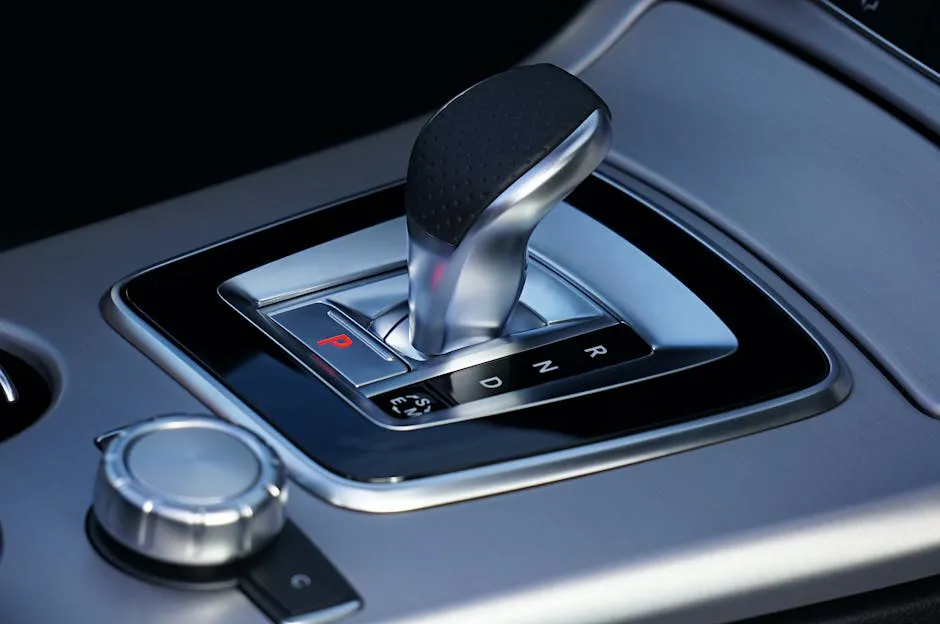
Why Does Temperature Matter for Mazda MX-5 Automatic Transmission Fill?
Introduction
The Mazda MX-5, affectionately known as the Miata, is a beloved sports car that brings joy to enthusiasts around the world. But whether you’re cruising along a scenic highway or stuck in stop-and-go traffic, there’s one factor that can make or break your driving experience: temperature. You might think of temperature in terms of your comfort level or the performance of your engine, but it also plays a critical role in the health of your automatic transmission.
In this article, we’ll explore the intriguing world of transmission fluid temperatures, specifically for the Mazda MX-5 automatic transmission. We’ll uncover why keeping an eye on temperature is essential, how it affects your transmission’s performance, and what you can do to ensure your Miata runs smoothly.
High temperatures can lead to transmission fluid breakdown. This, in turn, causes increased wear and tear on internal components. Conversely, low temperatures can thicken the fluid, impairing its lubricating abilities. A careful balance is key!
Buckle up as we navigate through the twists and turns of transmission temperature management and discover how you can keep your Mazda MX-5 performing at its peak. After all, a happy transmission means a happy driver!

Summary
Understanding the importance of temperature in your Mazda MX-5’s automatic transmission fluid (ATF) is crucial for maintaining optimal performance and longevity. This article explores the relationship between temperature, ATF quality, and transmission health, shedding light on key factors that every MX-5 owner should know.
1. Why Temperature Matters: High temperatures can lead to a breakdown of ATF, resulting in increased wear and tear on internal components. Conversely, low temperatures can cause the fluid to thicken, impairing its ability to lubricate effectively.
2. Transmission Temperature Norms: We’ll discuss the normal operating temperature range for the Mazda MX-5’s automatic transmission, with insights from real-life experiences shared by fellow owners.
3. Impact of External Conditions: The effect of driving conditions—like using the A/C on a hot day—on transmission temperature will be examined, supported by anecdotal evidence from the MX-5 community.
4. Tips for Monitoring and Managing Temperature: Practical advice on how to monitor transmission temperature, when to worry, and when to seek help, ensuring your MX-5 remains a reliable driving partner.
5. The Role of Transmission Fluid: Understanding how the right type of ATF can influence temperature management and overall transmission performance will be discussed, along with recommendations.
Join us as we uncover the ins and outs of why temperature matters for your Mazda MX-5’s automatic transmission fill, ensuring you drive with confidence and peace of mind.

The Importance of Transmission Temperature
Understanding Transmission Functionality
Automatic transmissions have several key components. These include gears, clutches, and the ever-important torque converter. Each part plays a role in ensuring smooth gear shifts and efficient power transfer. The heart of this system is the Automatic Transmission Fluid (ATF). It lubricates moving parts and helps with heat dissipation. Think of ATF as the lifeblood of your transmission—it keeps everything running smoothly, preventing wear and tear.
Without proper lubrication, parts can grind against each other, leading to premature failure. This makes it vital to monitor transmission temperatures. If things heat up too much, the fluid can break down, losing its effectiveness. And trust us, that’s a one-way ticket to a costly repair bill!

Temperature Thresholds
So, what’s the sweet spot for ATF temperatures? Typically, the ideal range is between 175°F to 200°F (about 80°C to 93°C). When temperatures exceed this range, you’re entering dangerous territory. Fluid breakdown can occur, leading to increased friction and wear.
Real-world experiences from MX-5 forums highlight this issue. One user noted their transmission temperature hit 216°F during a hot summer day with the A/C cranked up. Normally, it would hover around 180°F. This temperature spike raised concerns about the cooling system’s efficiency. When the A/C condenser gets hot, it can impact the transmission cooler’s performance. Discussions like these underscore the importance of keeping tabs on your transmission’s temperature.

Consequences of High Temperatures
Overheating can lead to a cascade of issues for your transmission. High temperatures can cause ATF to break down, resulting in a loss of lubrication. This increases friction, leading to accelerated wear on internal components.
Anecdotes from MX-5 enthusiasts reveal the severity of this problem. One owner recounted their experience of pushing the car too hard on a hot day. The transmission temperature soared, and they ended up with a hefty repair bill. Another member shared how their transmission began to slip after consistently running at elevated temps.
These stories serve as cautionary tales. Ignoring transmission temperature can lead to catastrophic failures. It’s crucial to be proactive. Regular checks and adjustments can save you from an unwanted engine light and expensive repairs down the road.
In summary, understanding transmission temperature is crucial for every Mazda MX-5 owner. By keeping an eye on ATF temperatures, you can ensure your beloved Miata runs smoothly and efficiently for years to come.

Monitoring and Managing Transmission Temperature
Tools for Monitoring
Keeping an eye on your Mazda MX-5’s transmission temperature can save you from potential headaches. Fortunately, several tools help you monitor this vital information. First up, OBD2 scanners are fantastic for reading real-time data straight from your car’s computer. These handy devices can not only tell you the transmission temperature but also flag any trouble codes that may pop up. Brands like BlueDriver and FIXD are popular choices among MX-5 owners for their reliability and user-friendly interfaces.
Another option is temperature gauges. These gauges can be installed in your dashboard to provide a continuous readout of your transmission’s heat levels. Look for brands like Autometer or AEM, which offer gauges specifically designed for performance cars. Having a dedicated gauge can help you catch any temperature spikes before they escalate into serious issues.
To wrap it up, investing in an OBD2 scanner or a temperature gauge is a smart move for any MX-5 owner. They provide peace of mind while you enjoy the open road.

Best Practices for Temperature Management
Managing your transmission temperature doesn’t have to be a chore. Regular fluid checks are a must! Make it a habit to inspect your ATF levels and quality every few months. If your fluid appears dark or has a burnt smell, it’s time for a change. Consider using a Transmission Fluid Change Kit to make the process easier and more efficient.
Driving habits also play a significant role in temperature management. Avoidance of heavy acceleration and sudden braking can help keep temperatures down. And remember, stop-and-go traffic can cause overheating, especially on hot days. So, if you can, take the scenic route!
If your MX-5 often runs hot, consider adding an Mishimoto Auxiliary Transmission Cooler. This extra cooling mechanism can help regulate temperatures during spirited drives or when towing. Many MX-5 enthusiasts recommend aftermarket coolers from brands like Mishimoto. They’re easy to install and can make a world of difference.

Signs of Trouble
Now, let’s talk about the red flags—warning signs that indicate your transmission might be running too hot. Keep an eye out for warning lights on your dashboard. If the “Transmission Temperature” light illuminates, it’s time to pull over and cool things down.
Another common symptom is slipping. If your transmission struggles to shift or feels like it’s losing power, that could signal overheating. Ignoring these signs can lead to costly repairs, so don’t take them lightly!
If you suspect a problem, don’t hesitate. Pull over, let your car cool down, and check the fluid level and condition. If everything seems normal but the issues persist, it might be time to consult a professional mechanic. Your Mazda MX-5 deserves the best care to keep you zooming along without a hitch!

Common Myths and Misconceptions
When it comes to automatic transmissions, there’s a treasure trove of myths floating around. Let’s bust a few!
One common misconception is that you don’t need to worry about transmission fluid changes unless something goes wrong. Wrong! Regularly changing your transmission fluid is like giving your car a spa day. It keeps everything fresh and reduces the chance of overheating. So, grab a Engine Oil Change Kit while you’re at it!
Another myth suggests that temperature management isn’t a big deal. Spoiler alert: It is! High temperatures can lead to fluid breakdown, which spells disaster for your beloved MX-5. Just because your car drives smoothly doesn’t mean it’s immune to overheating.
Automotive experts stress the importance of monitoring transmission temperatures. They recommend keeping an eye on both the fluid condition and the temperature. Some enthusiasts even suggest installing an auxiliary cooler if you frequently push your MX-5 to its limits.
So, next time someone tells you temperature doesn’t matter, remind them that even transmissions have feelings!

Conclusion
In conclusion, the temperature of your Mazda MX-5’s automatic transmission fluid is not just a number; it’s a vital sign of your vehicle’s health. Understanding why temperature matters can help you make informed decisions that enhance performance and prolong the life of your transmission. Whether it’s adjusting your driving habits, monitoring temperatures, or sticking to the recommended ATF, every little effort counts in keeping your beloved Miata in top condition.
A well-maintained transmission leads to a smoother, more enjoyable driving experience—so keep an eye on that temperature gauge! Regular checks can prevent issues down the line. Your MX-5 deserves the best, and you want to keep it performing beautifully for years to come. Stay curious, stay informed, and happy driving!

FAQs
Please let us know what you think about our content by leaving a comment down below!
Thank you for reading till here 🙂

Understanding why temperature matters for your Mazda MX-5’s automatic transmission fill is essential for maintaining its performance. Learn more about the importance of transmission temperatures.
All images from Pexels




